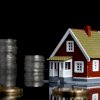
To maximise your return on your investment property, it is essential to understand the different kinds of repairs and maintenance.
Although the days are starting to get shorter, there is still plenty of time to maintain your investment property before winter completely sets in. For savvy investors, this is the time to check the condition of your property to see how it can be improved to meet the needs of the marketplace.
‘Repairs and maintenance’ is often used as an umbrella term for anything that needs doing to the property, but there are actually four different categories involved. For any investor who is serious about maximising their returns, all four types of expenses should be regularly considered.
Repairs
Repairs are a reactive response when something goes wrong. Examples include a blocked pipe, a broken oven or a roof that suddenly starts leaking – repairs are just the bare minimum required to maintain the property in an adequate condition. Thankfully, if you built or purchased a brand-new property, these items should be kept to a minimum for a number of years.
Seasonal maintenance
Seasonal maintenance items should be regularly addressed to ensure the number of repairs in the previous category is kept to a minimum. Gutter clearing, garden pruning, painting to prevent cracking and deterioration, checking the condition of the roof and regular pest control all fall into this category. These are great items to attend to before winter arrives.
Investment maintenance
Investment maintenance is the planned replacement of any item in the property that depreciates in value, including carpets, blinds, ovens, hot water systems, etc. Planned maintenance prevents the further repairs that would otherwise fall into the first category, and enables a good level of control over the standard of the property and the cost of maintenance.
Capital works
Capital works are any new elements or improvements that are introduced to a property. Examples include adding a dishwasher, a new sprinkler system to enable tenants to look after the garden, or an air-conditioning system. This type of expense is likely to increase the value of the property as well as the rental return.
If an investor only attends to the items in the first category, over time the property will be worth less and the rental return will effectively fall. With careful consideration of all four categories, the property can achieve more rent and attract better-quality tenants, and the value of the property is likely to increase. And with tax breaks available on property-related expenses (and EOFY just around the corner) there is every reason to do so!

Peter Gianoli
Peter Gianoli joined ABN Group in 2011 to establish Investor Assist. Peter has more than 15 years of experience in the property industry working across some of the country’s premier development projects and throughout his career has overseen the sale and settlement of properties worth in excess of $1bn. Peter is also a highly sought after public speaker and has educated audiences throughout Australia and around the world on topics including property marketing and investment.








